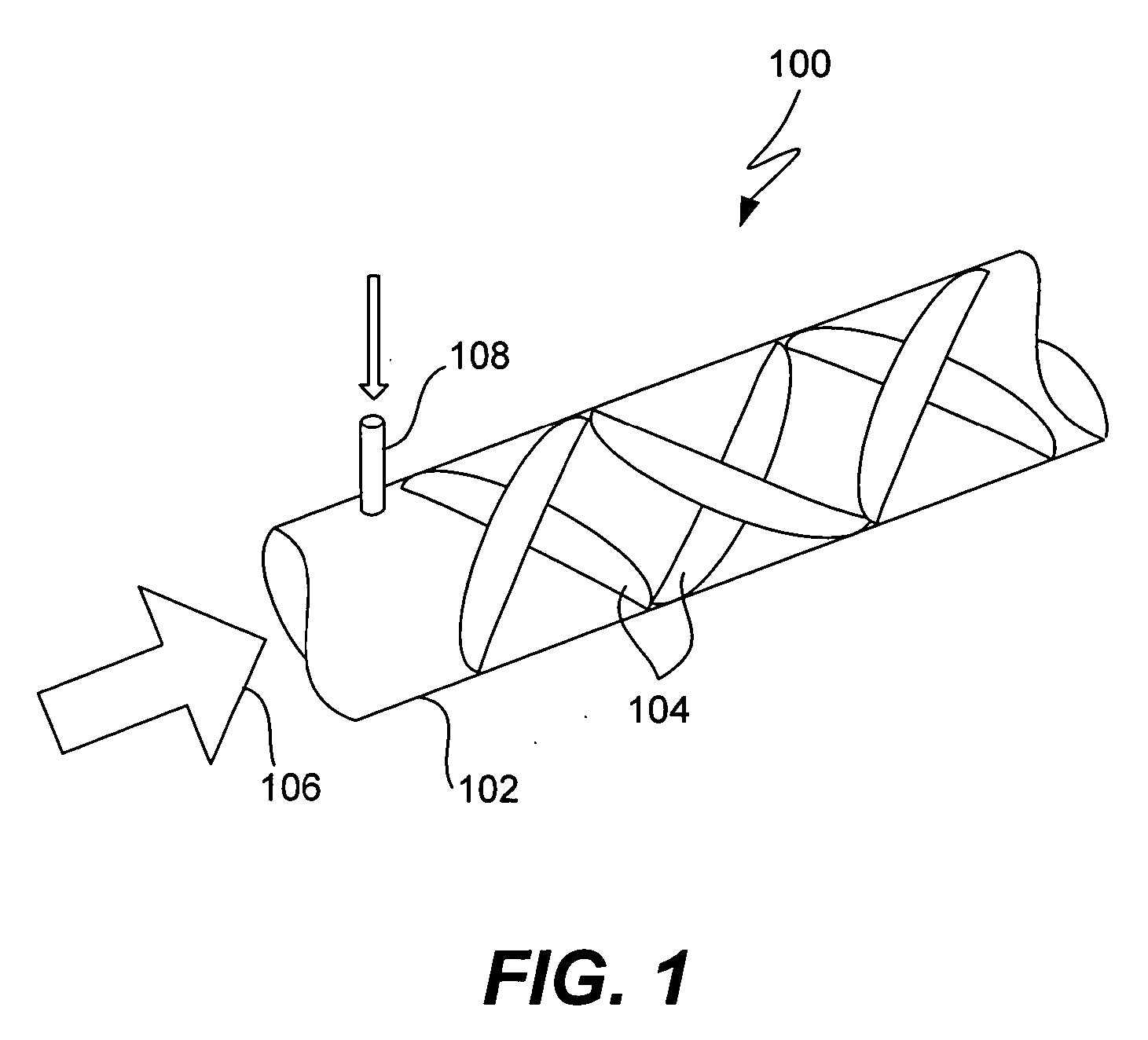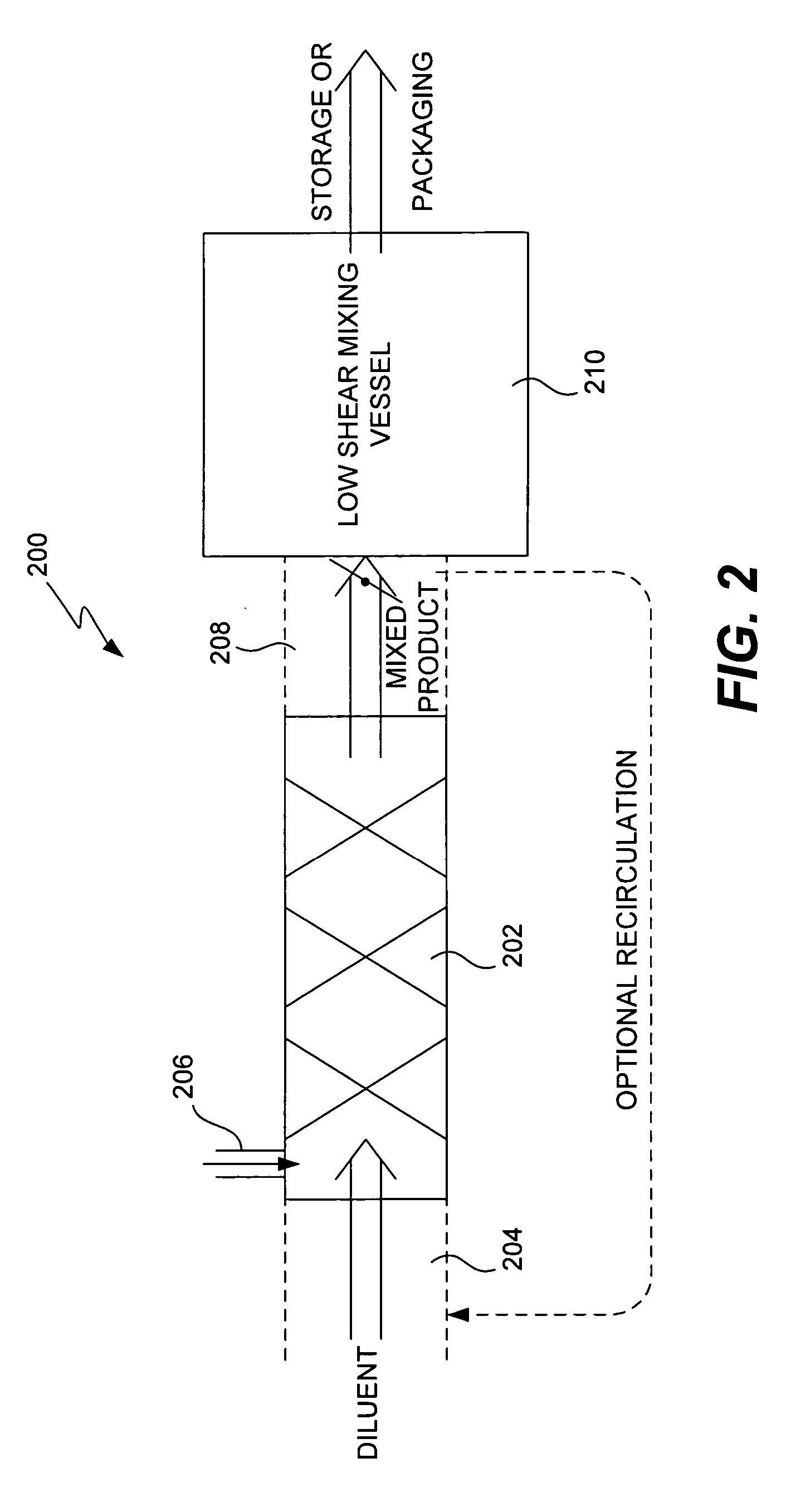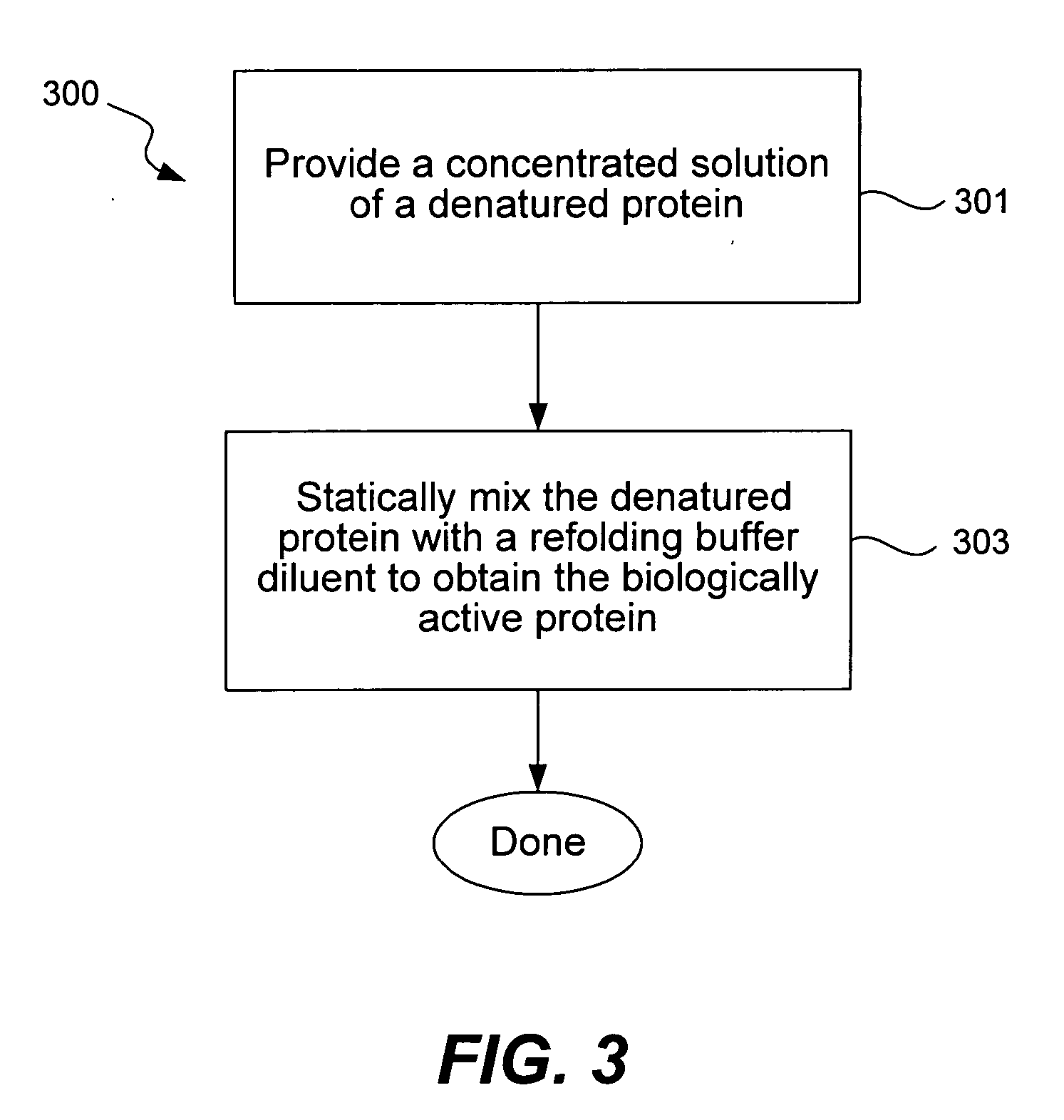Method and system for in vitro protein folding
a protein and in vitro technology, applied in the field of protein chemistry, can solve the problems of fixed mixing elements and static power, and achieve the effect of high yield
- Summary
- Abstract
- Description
- Claims
- Application Information
AI Technical Summary
Benefits of technology
Problems solved by technology
Method used
Image
Examples
example 1
Renaturation of Protein with One Disulfide Bond
[0056] One protein of interest for commercial production is Interferon-β (IFN-β), in particular Interferon-β 1b (IFN-β 1b), a 18.5 kD synthetic, recombinant protein analog of IFN-β. IFN-β 1b is a refolded protein which has the cysteine residue at position 17 replaced by a serine residue. As a microbially produced protein, IFN-β 1b is unglycosylated. It also has an N-terminal methionine deletion. It is characterized by a very hydrophobic surface in the native state and by one disulfide bond, which remains intact throughout processing. IFN-β 1b, marketed as Betaseron®, has been formulated into a successful pharmaceutical that has been approved for treatment and management of multiple sclerosis (MS). This protein analog, materials and techniques for its manufacture, its formulation as a therapeutic and its use to treat MS are described and claimed in a number of U.S. patents and applications including Application No. 435,154, filed Oct. 1...
example 2
Renaturation of Protein with Three or More Disulfide Bonds in Native State
[0063] Hen Egg-White Lysozyme is a 14 kD molecule with four disulfide bonds. It has a complex refolding scheme but is well studied and has been characterized in detail. This experiment shows that the static mixer will work for more complex folding schemes than IFN.
[0064] 0.3 g lysozyme denatured in 8M GuHC1, 50 mM Tris, 1 mM EDTA, 32 mM DTT buffer, pH 8 at 37° C. for 1 hr was diluted 16-fold in 5 minutes with 1.25 M GuHCl, 50 mM Tris, 1 mM EDTA buffer, pH 8 and incubated for 24 hr at 25° C. to yield a final concentration of 1 mg / mL. This experiment used a 3 / 16″ disposable static mixer with 12 helical elements that was fitted with a reducing hose barb adapter just upstream of the mixing elements. Flow rates were chosen to give a Reynold's number of approximately 1000 (i.e., 60 mL / min for diluent buffer and 4 mL / min for denatured lysozyme solution). Samples were taken for percent purity by activity assay to as...
PUM
| Property | Measurement | Unit |
|---|---|---|
| temperature | aaaaa | aaaaa |
| temperature | aaaaa | aaaaa |
| temperature | aaaaa | aaaaa |
Abstract
Description
Claims
Application Information
 Login to view more
Login to view more - R&D Engineer
- R&D Manager
- IP Professional
- Industry Leading Data Capabilities
- Powerful AI technology
- Patent DNA Extraction
Browse by: Latest US Patents, China's latest patents, Technical Efficacy Thesaurus, Application Domain, Technology Topic.
© 2024 PatSnap. All rights reserved.Legal|Privacy policy|Modern Slavery Act Transparency Statement|Sitemap



